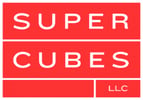What does it mean for a container to be an "A," "B," or "C"?
If you are calling around to get pricing on containers, you have probably encountered rates based on if the container is an "A, B or C". But what does that mean? The short answer - no much. Ratings like A, B and C do not have any standards. They are not an industry classification. One person's "A" could be another person's "Are you kidding me?!"

Many container vendors use it as a short-hand for splitting up containers they have in stock by how they look cosmetically. Which on the surface sounds like a good idea. If you have some nicer ones, why not charge a little more for those for people who need that and the ones that are not quite as pretty can be a great deal for someone who doesn't care.
But the problem is what makes an A and A? Some vendors have strict standards that they have figured out so they know and A or a B or a C when they see it. Others may use the rating more a relationship between what they have in stock. What would have been a C before all the sudden gets elevated to an A because they got some less pretty containers in. But either way, it is a subjective standard. Is it based on cosmetic beauty? Is it based on the integrity of the container? If you are quoted these prices, dig deeper into the ratings to make sure if you are paying a premium for an "A," that you are getting what you think you are getting.
Take the above container for example. It could be an A, B or C. It does not have much rust on it, so that could make it an A. It could be a B because while it doesn't look fantastic, it is structurally a great container. It could be a C because it is not beautiful by any standard.
Super Cubes does not use these ratings. Instead, we use industry categories - wind- and water-tight, cargo-worthy and one-trip containers. For a full description of these categories, check out our page on that by clicking here. We make it clear that cosmetics don't play into our description. If you know you need something that has almost no rust, we recommend getting a one-trip container. We also serve a lot of different markets, but in some markets we can send customers in to inspect their container ahead of time. That is not always an option. But seeing a container through inspecting it or pictures will tell you far more than any A, B, C rating.
The take-away advice - ask a lot of questions if you have something specific in mind. All vendors would rather make sure you know what you're getting before the truck arrives with your container.
Tags:
used containerMay 14, 2015
